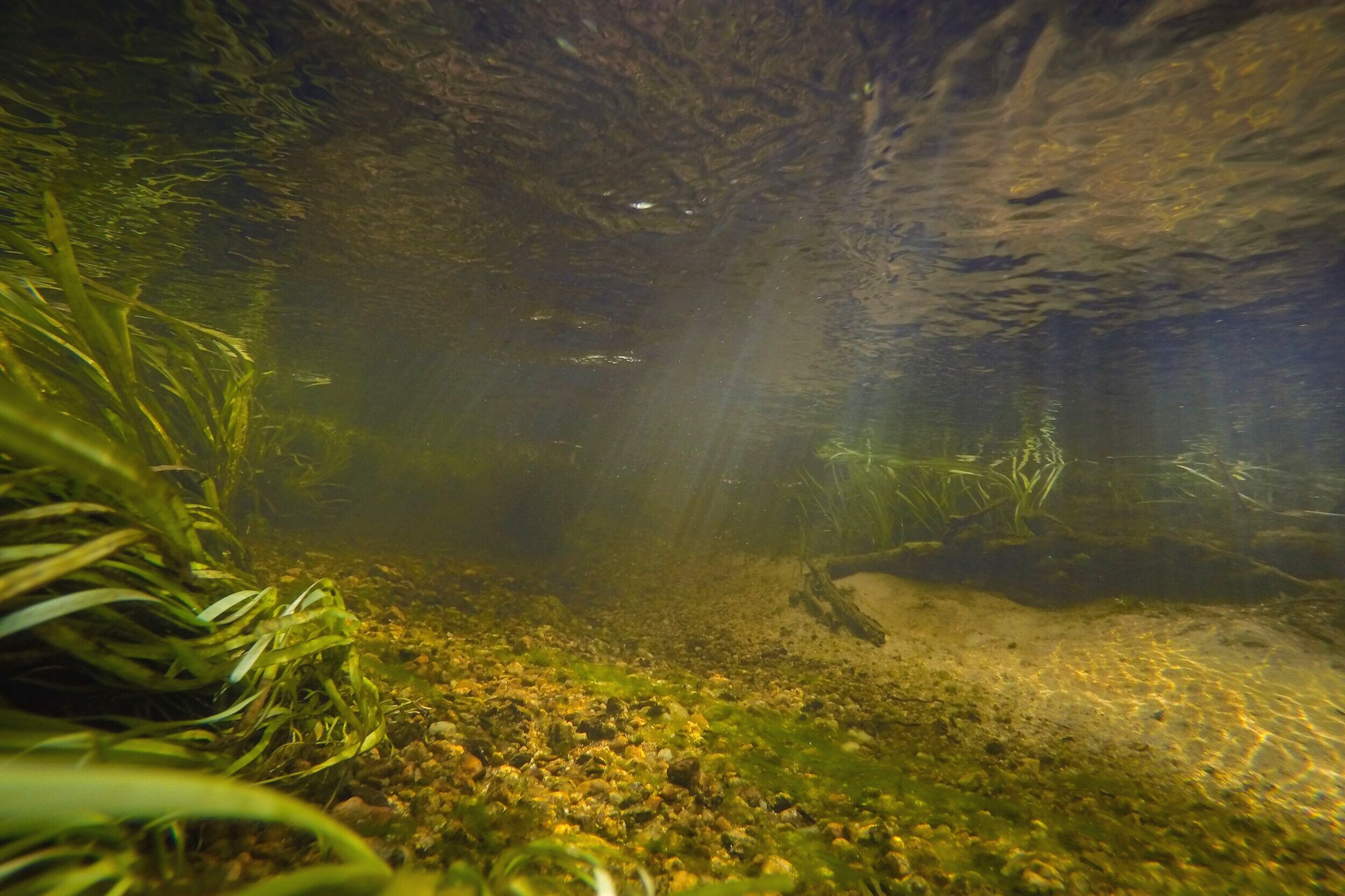Seagrasses Can “Hear”
I didn’t know that either. I came across this article in Hakai Magazine highlighting recent research on how man-made sounds impact seagrasses. The work focused on Neptune grass, a type of seagrass found in the Mediterranean. In short, artificial sounds negatively impacted the seagrass: decreasing the starch storage in the roots and rhizomes and degrading the fungal symbionts in the roots. In a noisy ocean, this means that seagrasses population may decrease, and biodiversity may be lost.
So how did they figure this out?
The inner ear of humans control balance and orientation. If you’ve ever had an inner ear infection or vertigo, you know how important the inner ear is. We are not unique in that function – though some other animals may not have ears (or hear), they do have similar structures called statocysts. This same group of researchers have tested impact of man-made noise on statocysts inside cephalopods. Turns out cephalopods experience noise-induced trauma. So, if non-hearing organisms can “hear”, can plants “hear” too? Plants, particularly seagrasses, have statocysts of their own called amyloplasts. These starch-filled structures sense gravity and help the seagrasses push their roots into seafloor sediment. With roots and rhizomes firmly planted in the sediment, the seagrasses can protect themselves from wave-generated stress, and they can grow new plants through offshoots.
Solé et al. (2021) found that exposure to man-made noise decreased the amount of starch stored in the amyloplast. Less starch storage degrades the function of the amyloplast and the roots and rhizomes may not push as deeply into the sediment. Wave-generated stress (a storm or a boat wake) would more easily rip the grass with shallow roots out of the sediment. This decreases the likelihood of the grass bed expanding which, in turn, decreases the population of seagrass. Additionally, they noted that a fungal symbiont (a fungus that lives on/in the roots systems of the grass but doesn’t harm the grass) was degraded. This fungal symbiont is thought to help with nutrient uptake. Without this symbiosis, the grass may have difficulty adapting/surviving other stressors, like periods of low nutrients.
In short, noise-induced trauma is not good for the grass bed at all.
Why does this matter to Narragansett Bay?
Narragansett Bay is a noisy place. It’s an urbanized estuary full of man-made noises (boats, activities near the shoreline, work on the seafloor laying cables, or military or industrial work done in the water, etc.). We don’t know if our native seagrasses, eelgrass and widgeon grass, are negatively impacted by sound. A similar study conducted here may help us understand how to better support our current seagrass populations or help us understand why we are struggling to boost seagrass population through restoration measures.
Remember, seagrasses can “hear”. Talk nicely to them.
Written By: Courtney Schmidt, Staff Scientist, Narragansett Bay Estuary Program
Article links:
Braun, A. 2021. Noise Pollution Affects Practically Everything Even Seagrass. Hakai Magazine. https://www.hakaimagazine.com/news/noise-pollution-affects-practically-everything-even-seagrass/. Last Accessed 27 July 2021.
Solé, M., Lenoir, M., Durfort, M. et al. 2021. Seagrass Posidonia is impaired by human-generated noise. Communications Biology. 4: 743-753. https://doi.org/10.1038/s42003-021-02165-3.
Andre, M., Sole, M., Lenoir, M. et al. 2011. Low-frequency sounds induce acoustic trauma in cephalopods. Frontiers in Ecology and the Environment. 9(9): 489-493. https://doi.org/10.1890/100124.

